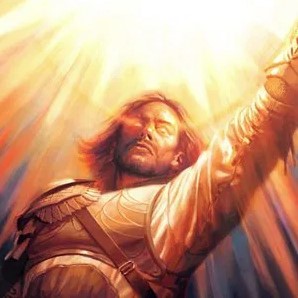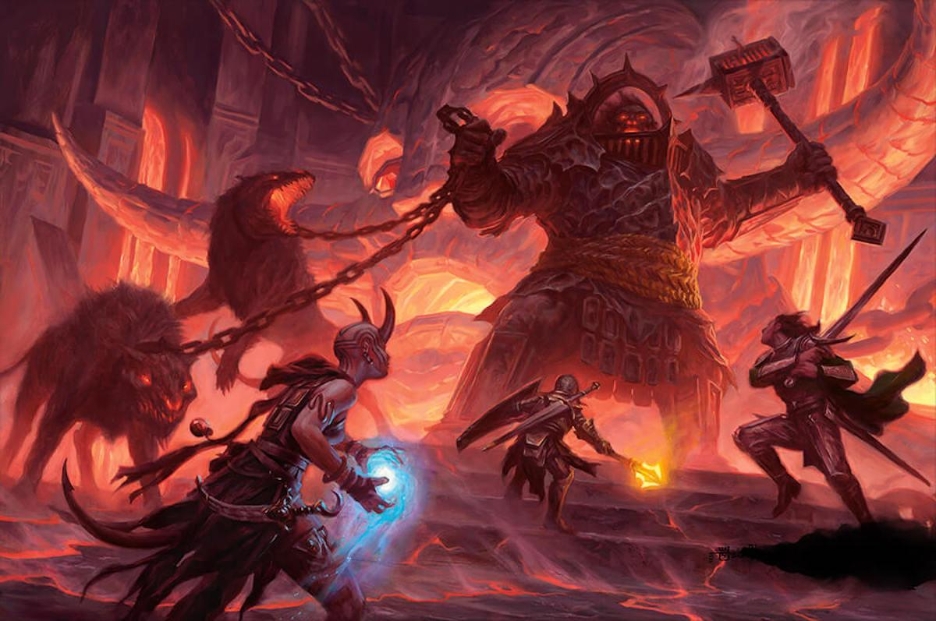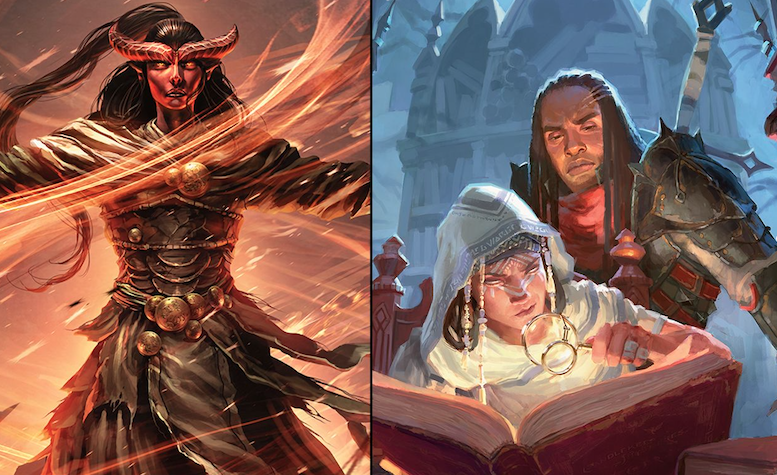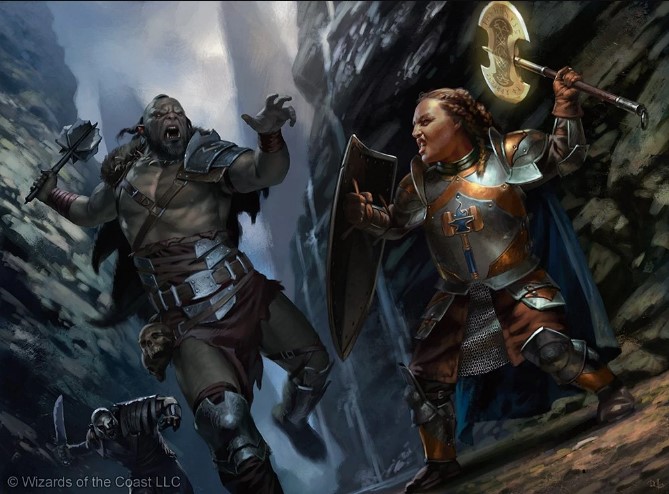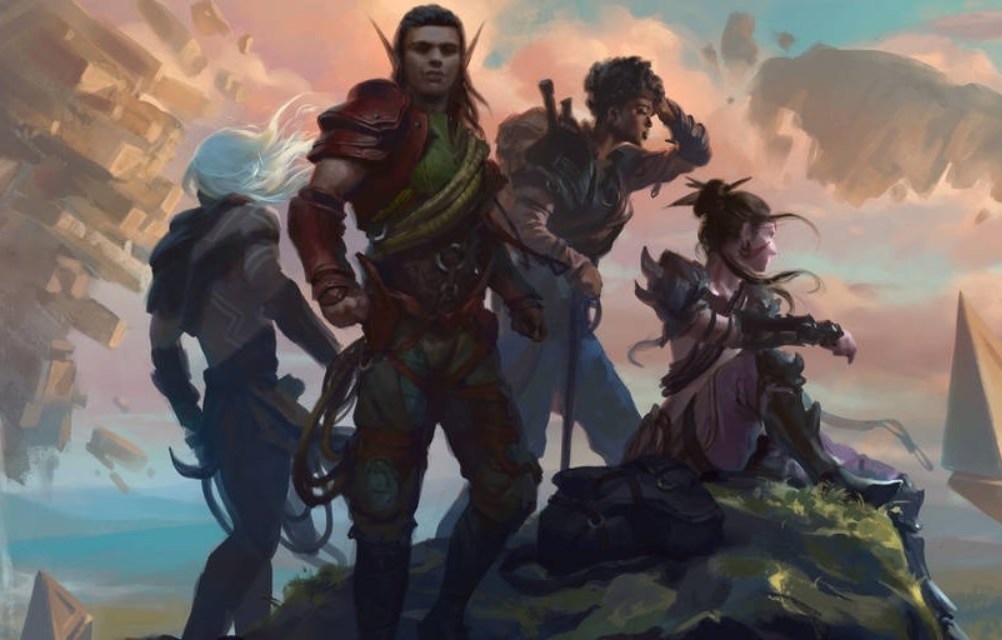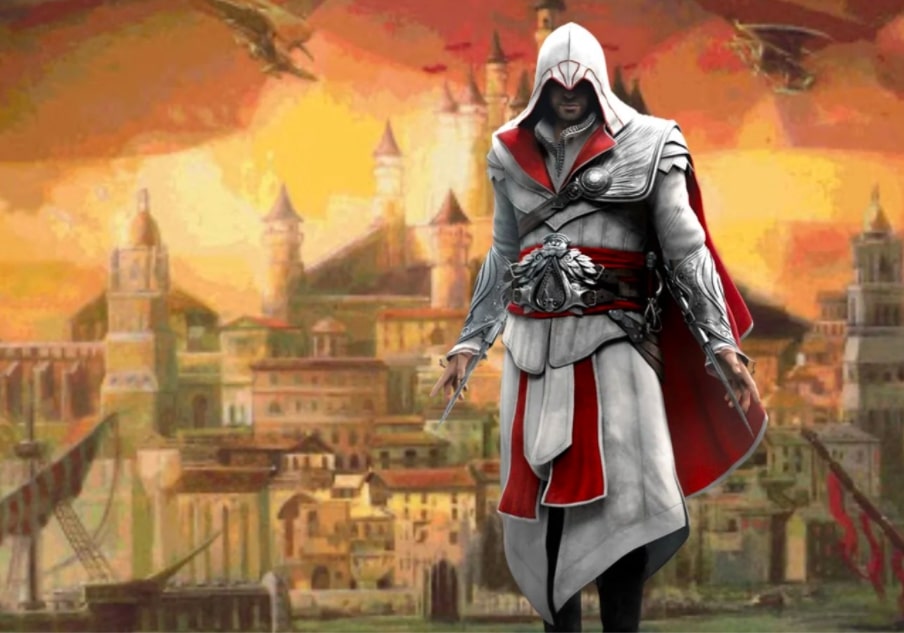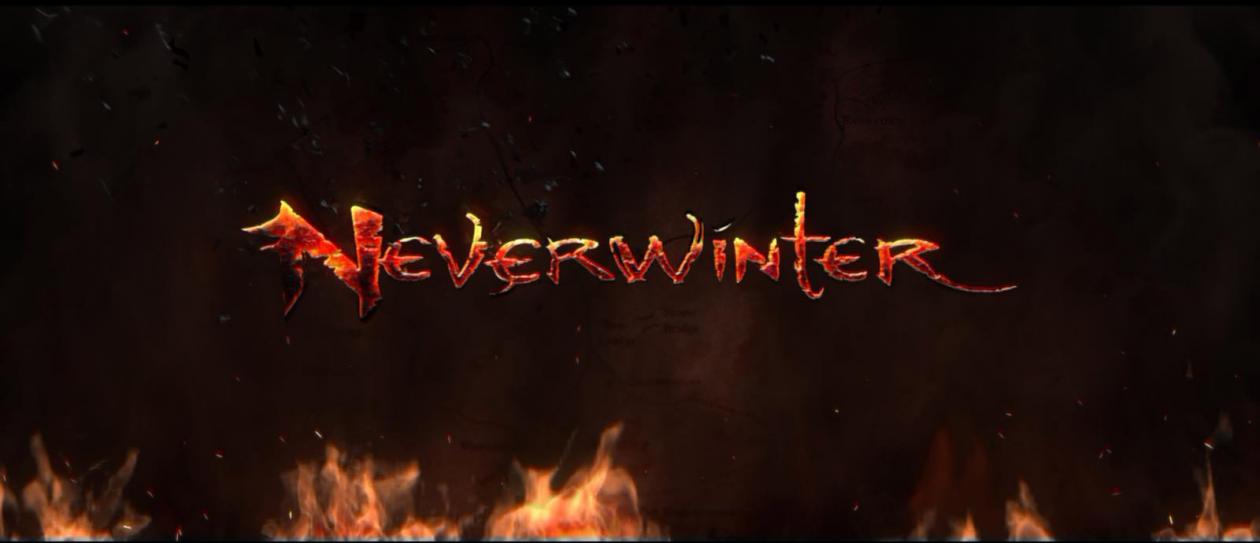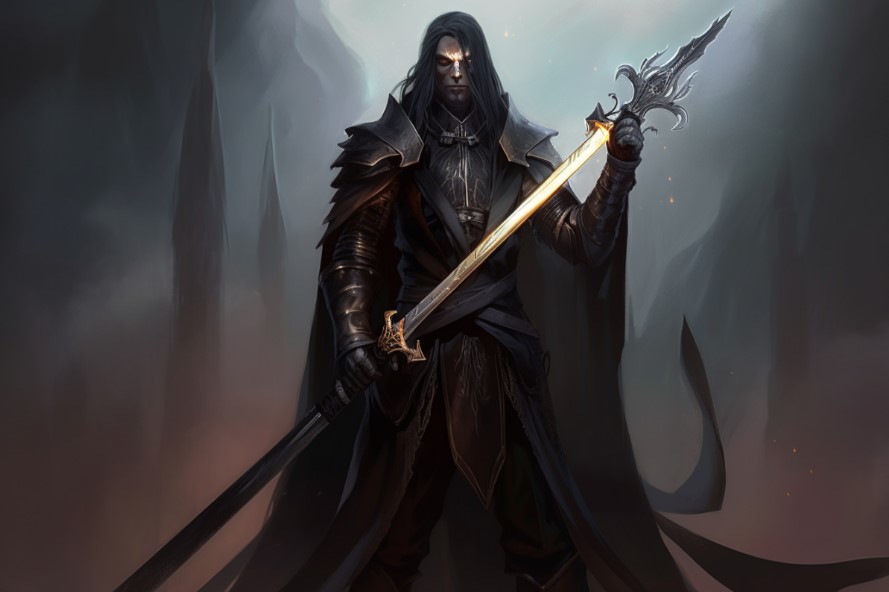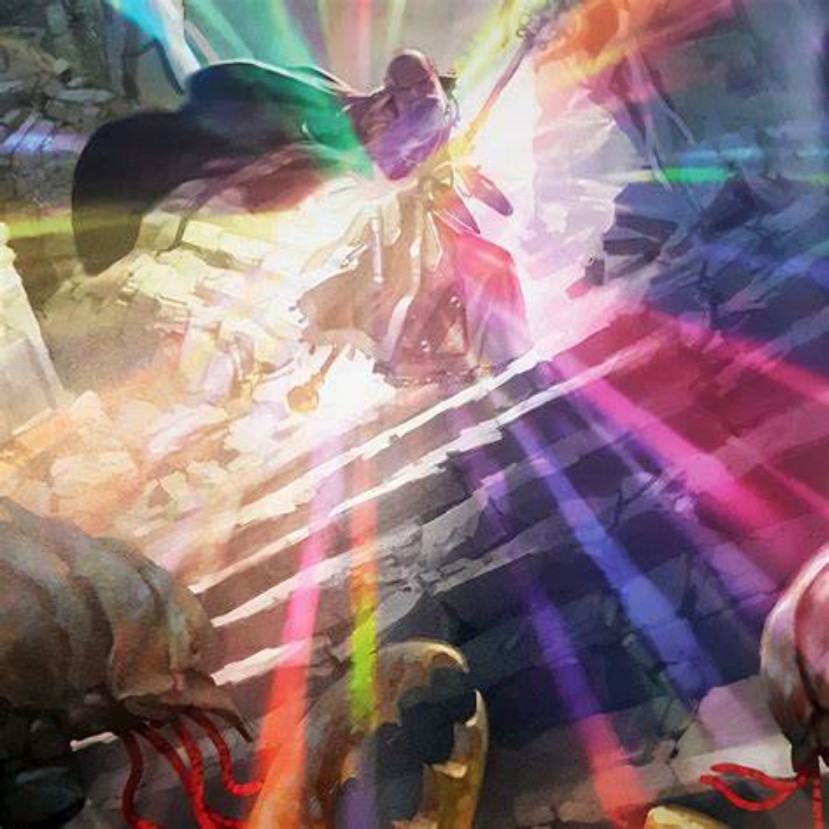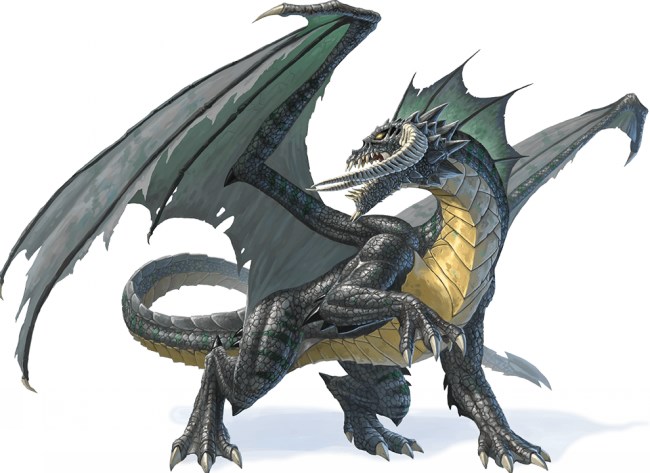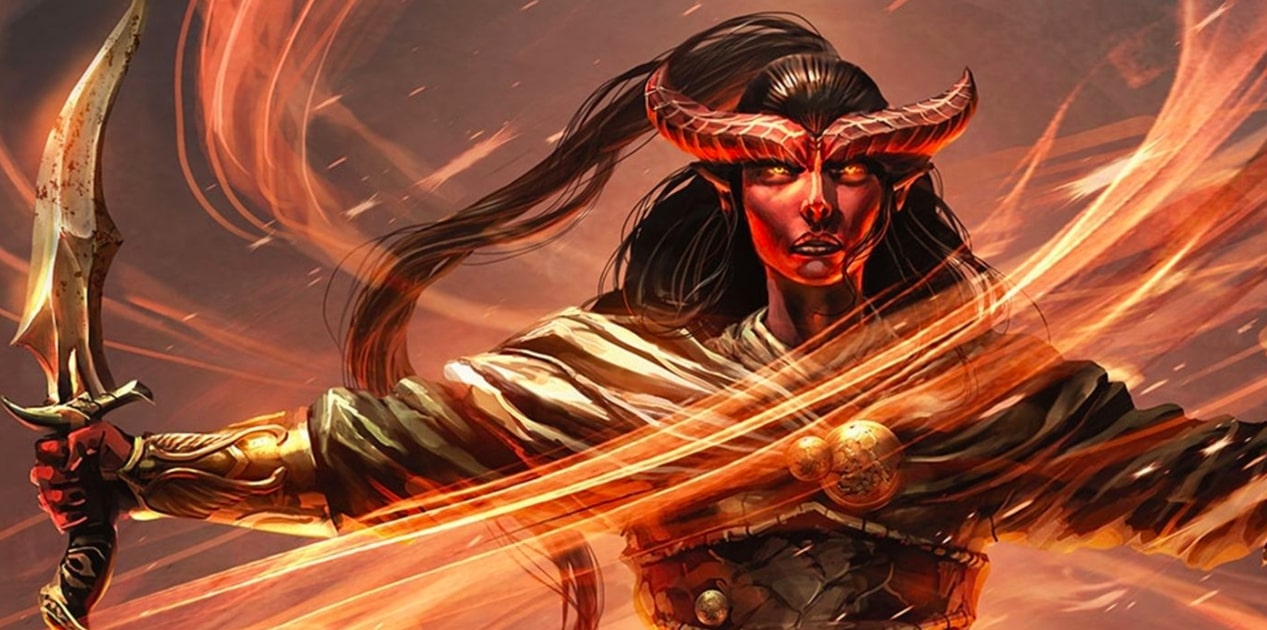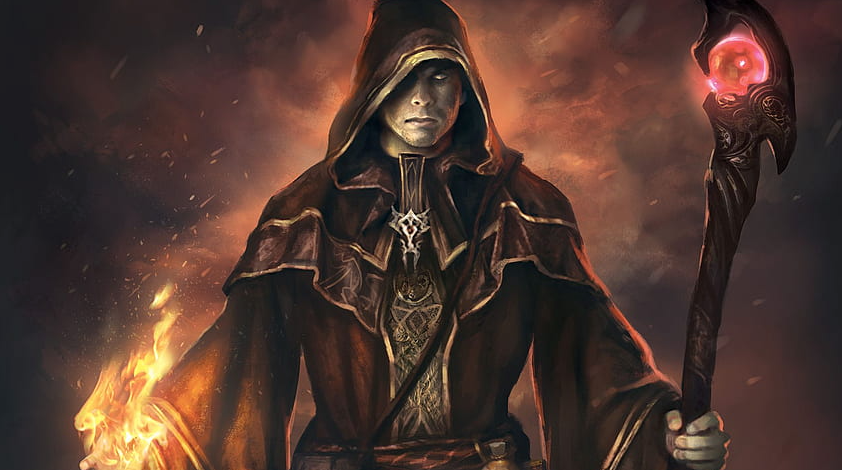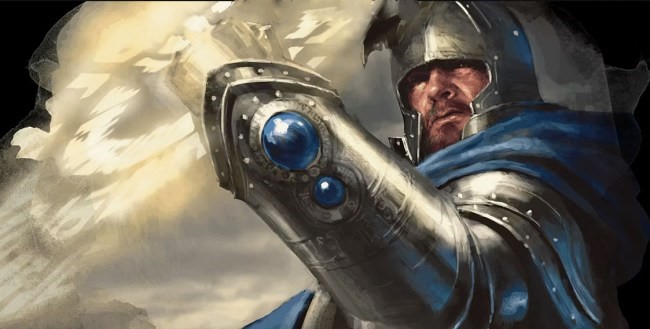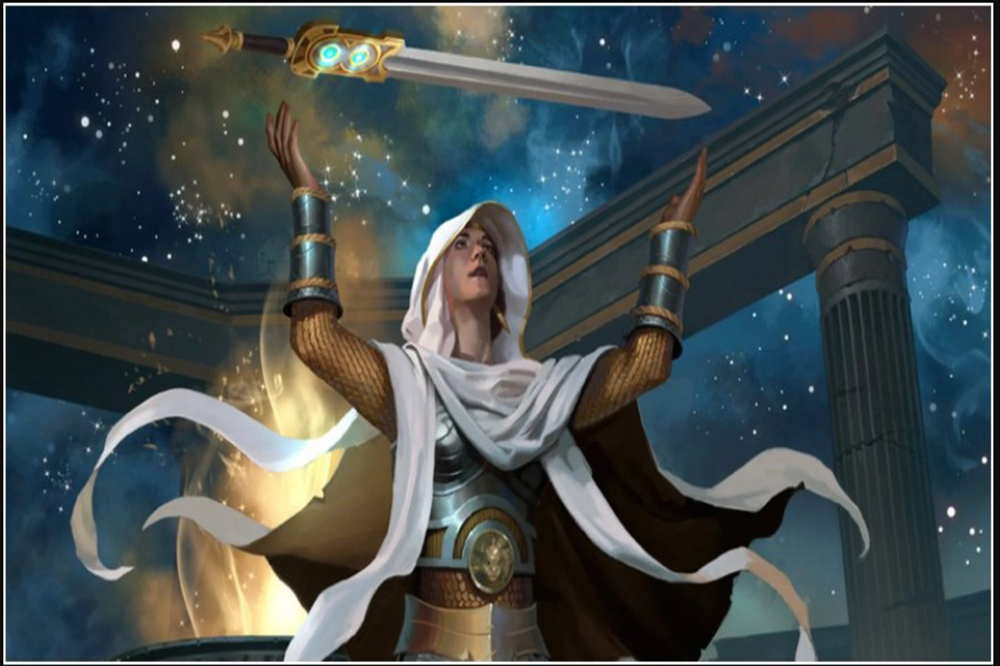
The worlds of Dungeons and Dragons are full of heroes, villains, adventure, love, heartbreak. While these stories are created by the players, every story needs a storyteller. The Dungeon/Game Master (DM or GM) is the voice of the world, setting the players up for feats of heroism and knife-twisting anguish. They set the stage, leading the players forward to victory or defeat.
You have a group of players and a brand-new story idea (or one that you cobbled together off of tumblr). Great! But…now what? Being a DM is intimidating, especially if you are new. I know it took me a few different one-shots and campaigns to really get a knack for the role.
But being a DM doesn’t have to be hard! It can be as easy or as difficult as you make it. I’ve compiled a list of some things I wish I had known in my early years of being a DM. Hopefully, you can benefit from the lessons I learned the hard way and really have fun with your campaign. But ultimately, this is your world–if these tips help, great! If not, play your game your way.
Here are my top fifteen DM tips and tricks to improve your DM skills and ultimately make your campaign the most fun it can be.
15. Continue to Listen and Learn

Wizards of the Coast: March of Progress by Ben Wootten
Congratulations! If you’re reading this, you’re already following this step! One of the great things about tabletop roleplaying games is that there is always more to learn. Sometimes, the best advice on being a DM is to expand your sources and do some research into what other DMs find successful in their games.
While you should play your game in the way that works best for you and your players, other DMs can provide advice on how to play a successful and fun game. Source guides and advice stemming from experience can give you new ideas and tips on how to run your game. DMs, both new and old, can help you when you’re stumped by mechanics or table-based problems. Even non-DMs, like close friends, can provide inspiration and motivation for your world and story.
Many online DMs offer tips and tricks to others, either those just getting into the craft or seasoned veterans who have tens of hundreds of games under their belts. From video essays to word of mouth to articles just like this one, there are a plethora of tips and tricks on how to improve your game. Once you start digging around, you can find a ton of information on how to build up your game and avoid common pitfalls.
No person is an island. While the advice of strangers should be taken with a grain of salt, you can learn a lot from the successes (and failures!) of other DMs, perhaps finding similarities between their games and yours.
14. You Don’t Need to Know Everything
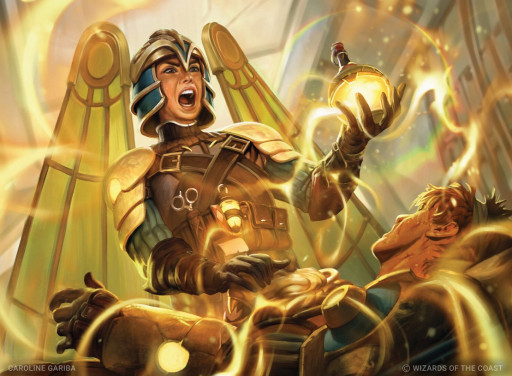
Wizards of the Coast: Airlift Champion by Caroline Gariba
No one is a perfect DM, not even the greats like Matthew Mercer, Brennan Lee Mulligan, or Griffin McElroy. From experienced DMs to players who just started their first campaign, everyone will be stumped by a rogue question or forget the rules for a particular obstacle. When this happens to you, know that it is absolutely normal and helps you to grow into a better DM!
Do you know off the top of your head how far a human barbarian can throw a hefty wooden barricade? Neither do I! Sometimes you won’t know the answer to a question, whether it be one your players ask, something you saw online or in a book, or one you genuinely asked yourself. The important thing isn’t knowing the answer, but knowing it’s okay not to know.
Let’s take my example from before, which was a legitimate question my players posed to me in a past campaign. While I could’ve felt embarrassed and railroaded the story by frantically looking up the exact answer, that wouldn’t have been much fun to anyone. Instead, I realized that I didn’t have the answer and that was okay. I looked up something that might’ve been of a similar size and made a rough estimate for our game. This way, the story moved onward and everyone continued to have fun.
One of the main drawbacks that arises from always expecting to have the answer is that when you don’t, you can feel self-conscious and embarrassed. But you don’t have to be! Rough estimates are often good enough for tricky answers. Use the Rule of Cool to keep the story moving. And if you really need an exact answer, table the question and find the answer later.
13. Rules Facilitate Fun, Not Stifle It
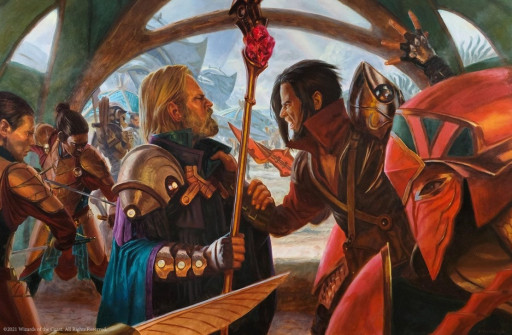
Wizards of the Coast: Bitter Reunion by Jake Murray
‘Rules lawyer’ is a notorious term for someone who follows the rules so closely that they end up having less fun because of it. They miss the whole point of the game, and ultimately make others less excited to play. Rules are meant to facilitate fun, to set boundaries and obstacles for players to overcome, rather than to stifle the spirit of creativity and engagement.
Every game must have rules, otherwise the game wouldn’t be a game anymore–it would just be chaos. The rules set boundaries for the game, giving players challenges and tools to write their own story. If the rules end up boring players or making it too tedious to move forward, the rules should be changed to encourage fun play.
While a DM should be careful with changing too many rules, there is plenty of wiggle room to bend rules in your campaign. ‘Rule of cool’ refers to slight bending of the rules to pull off an epic moment, or just to make a player feel important. This can range from jumping twenty feet to land on a dragon’s head midflight to riding down the back of a tarrasque to avoid fall damage. While these things may or may not actually be possible (in a fantasy world), they don’t upset the adventure too much and make the player feel awesome.
The rules exist to guide you, the DM, and your players on their adventure. Just like the DM sets the stage for an epic quest, the rules set the stage for how your world will work. It would be no fun if rules about gravity didn’t exist and you could randomly go careening off into the sun (roll a new character). But when the rules make the game feel less fun, sometimes you can bend or remove them to encourage a good game.
12. Set Homebrew Rules Upfront

Wizards of the Coast: Aeronaut’s Wings by Leon Tukker
Following up our discussion on rules, ‘homebrew’ refers to the special rules you make for your game. These can be widely accepted or something original to your table, but homebrew rules are not officially published. Some have been tried and tested while others are hot off the press. Homebrew itself is neither good or bad, but it is important to talk to your players and make sure they know what homebrew you’re incorporating into your game.
Just like regular rules, homebrew rules provide boundaries on what you can or can’t do. Sometimes they modify a rule that makes the game less fun. Other times, they add a new feature or mechanic to give the game variety and flair. Either way, the game is most fun when everyone knows the rules and is on the same page.
Say I have a homebrew rule that forces me to cast Fireball whenever I get angry. Cool, that could be a fun character quirk where I am trying to manage my emotions and not hurt those around me. But if another player doesn’t know this homebrew rule and stands too close to me when I stub my toe, their character could get seriously hurt for no apparent reason. The player may get angry and not have fun, even though I think the rule is very fun.
Tabletop roleplaying games aren’t played in a vacuum. They are collaborative games, requiring input and teamwork from everyone involved. When some players feel slighted because they didn’t know the rules or weren’t given fun abilities like other players, their game ends up being less fun. It’s important to make sure everyone feels included, that they are important to both the story and table.
11. Use Enemies and Terrain
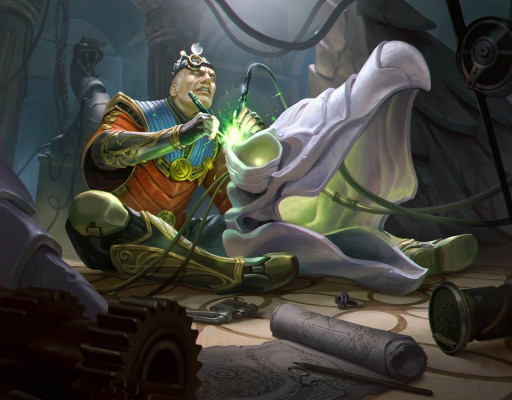
Wizards of the Coast: Tawnos, the Toymaker by Livia Prima
This is a piece of advice I wish I had known earlier in my time as a DM. Does it ever feel like combat just falls flat? Enemy 1 hits Player 1, then Player 1 hits back. To shake things up, try to vary your enemy types and play around with the terrain. This will challenge your players to think outside the box and find different solutions than just attacking back and forth.
Combat is a lot of fun–there’s a reason why it is one of the focal points of D&D! But if all you’re doing is hitting back and forth, combat can get stale quickly. But if there are new obstacles for them to face, like a monster who is resistant to physical damage or a combat zone in the middle of a collapsing cave (where your players have to dodge falling rocks), your players will have to find new ways to defeat their enemies. They’ll have to find new ways to simply stay on their feet!
The number of enemies can drastically change your combat encounter–think of the difference in fighting three goblins or ten. Switch up the sizes of enemies–have one large boss and several small minions. Play off of natural resistances or legendary actions. Maybe your players can find a peaceful solution to the encounter. Design your combat zone with sheer cliffs or full of sticky sludge to slow your players down. Each little change will shift how your players approach their next encounter.
Combat provides opportunities to fight new and different monsters in the world of your making. If combat typically takes upwards of two hours for a single encounter, it should be engaging and challenging to your players. While they may not seem like much, paying attention to the enemies you throw at your party and the type of environment they find themselves in can add a lot of depth and problem-solving to your campaign.
10. Session 0.5

Wizards of the Coast: Feldon, Renom Excavator by Howard Lyon
‘Session 0.5’ is not found in every campaign. While session 0 refers to the session where your players create their characters, and session 1 refers to the actual first session of the campaign, session 0.5 falls somewhere in between. It is the time where both you and your players can explore the world and your character before the actual campaign starts. It can help you and your players feel more comfortable with the campaign as a whole, making it easier for all of you to have fun.
Session 0.5 is the session where you and your players get to know their characters, so to speak. It provides a low-stakes adventure for your players to explore before the real plot gets moving. This can help your new players to get a feel for the game and your veteran players to explore how they want to play. It also gives you, the DM, a chance to present your world in small bites before tackling the meat of the campaign.
In some campaigns, session 0.5 is played with the entire group in a stand-alone adventure. You can explore how the party met and what brought them all together. Some DMs even introduce their players as non-player characters (NPCs), exploring the underlying threats of the world before their characters enter the scene. Some DMs offer session 0.5 as one-on-one meetings, allowing each character to develop their backstories and play a solo adventure with the DM before the campaign gets started.
Starting a brand new campaign is exciting, but it can also be intimidating. Session 0.5 gives you a taste of the story ahead without diving in headfirst. It also gives you room to adjust your story and playstyle before you get too far into the campaign. Overall, session 0.5 allows you to ease into your story so that everyone has fun.
9. Tie Player Backstories into the Plot

Wizards of the Coast: The Archimandrite by Cristi Balanescu
One of the most fun parts of a D&D campaign is creating and playing new characters. Your character is the avenue by which you explore the world and tell your story. Every character you create has a piece of YOU in them. As a DM, you can show how much you care about your players by incorporating their characters into the lore of your world.
Whether your players write a ten-page backstory or come up with an idea on the spot, it is important to let them know that you appreciate them at your table. While it can be easy to just stick to the story you, the DM, want to tell, it is important to remember that you are playing a collaborative game. When you include their stories into your world, you’re showing that you care about their input and ideas. Plus, it’s fun to see another person be inspired by your creations!
Not everyone wants to turn their players into the chosen ones who are destined to save the world. There are other ways to tie your player’s backstories into the plot. You could send them to visit their home village, or lead them back to the NPC who sent them on an adventure in the first place. You could make the villain from one of their backstories the big bad of the entire campaign. Each of these plot hooks keeps your players engaged in the story.
If a player doesn’t feel connected to others at the table or the story you’re trying to tell, it can be difficult to keep them engaged in the story. Even the best campaign in the world needs good players to, well, play it! Including your player’s backstories in the main story lets them know that they are important and you enjoy having them at your table.
8. Name List

Wizards of the Coast: Over the Top by Cristi Balanescu
I can’t count the number of times my party has gone shopping or met an NPC wandering around and asked them a simple question: “What’s your name?” This question haunts my nightmares. Not only do I need to create a name on the spot, but I also need to make it fit into my story, the location, and the role that NPC plays in the story. A list of random names is a lifesaver for any DM who struggles to come up with names in a pinch.
A player asking for an NPC’s name can throw you through a loop if you’re not expecting it. You’re juggling so much other information, like the overarching plot, what the party is doing, and where to go next. A list of names is an easy way to avoid this stress. Whether it be a physical list or a randomly generated page on FantasyNameGenerators.com, these lists keep the story rolling and provide a new friend for your players to interact with.
When your players meet a new NPC, just take a look at your list. Whichever one feels right or is entertaining enough is the name for you. It can help to write a brief descriptor next to the name, like ‘kenku merchant’ or ‘tabaxi assassin’, so you can remember who’s who. Next time you encounter this particular character, you will have their name ready to go.
While scenarios and descriptions are easy to make up on the fly, names are much more challenging. A list of pre-made names is vital to making your own game and preparation easier. It also helps you to keep your notes organized and keep your players engaged with the story. Who wouldn’t want to return to the tent of Blinkey Blinkerson, the magic-weapon dealing blink dog?
7. Prep Extra Side Quests

Wizards of the Coast: Loran, Disciple of History by Cristi Balanescu
Why won’t the players just stick to the story? While the overarching plot will lead your players on a grand adventure and set them up to defeat an epic villain, your players won’t always follow the route you want them to take. They may want to explore a minor detail (which was never meant to be important in the first place), go shopping, or simply try something different. In order to keep your players entertained while also connecting them to the main story, it is useful to have extra side quests for them to explore.
Side quests may not be as important as the main story, but they can provide a bit of downtime for your players to process a recent plot point or lore reveal. It gives them a break from saving the world, granting them time to just have fun. Side quests can also give the party an extra source of income to spend on magical items or plot-relevant macguffins. Entire campaigns have been written featuring nothing but side quests! Side quests are the connective tissue of your D&D campaign.
When your players start to slow down or grow weary of pressing forward, side quests can give them a chance to take a break while still playing in the world. They may not be ready to encounter the big bad, but they may enjoy clearing out a horde of goblins or rescuing Uncle Billybob from a rampaging owlbear. Side quests can be tailored to the party’s location or time of day; many rulebooks have tables of premade quests to fit into your campaign as you see fit. Mix and match side quests until your party is ready to return to the main story.
Player burnout is often no fault of the DM. You can create the most engaging story with epic adventures, but sometimes there is just too much to do. Side quests break up the constant action, giving your players a low-stakes mission. These missions can also directly or indirectly influence the main plot, but they give both you and your players a bit of a breather before tackling the next plot point.
6. Don’t Lead Too Rigid of a Story

Wizards of the Coast: Stern Lesson by Lie Setiawan
As a DM, you want to prepare the best possible story for your players. You want them to go on grand adventures, defeat terrible monsters, and emerge victorious. But it is important to remember that the players must write their own stories. If you set up too rigid of a story, your players will not be able to explore and grow in their own time.
When I was a new DM, I wanted to prepare as much as possible. The party would go from point A to B to C. But in reality, that’s not how a campaign works. Players will go off on side quests, poke at things that aren’t important to the plot, and get themselves into trouble. Sometimes, the players will guide you to new moments that make the game even more fun than you had prepared.
If you’re a DM like me and want to prepare as much as possible, try to prepare in chunks. Set up moments for the players, but give them options on how they resolve them. When they encounter the big bad for the first time, a massive red dragon who swoops down upon the city, what will the party do? They may run from the dragon, knowing they’re not yet ready, or they may try to fight it then and there. They may retreat and regroup, searching for powers that will make them stronger. Giving your players choices on what to do next will make them feel like their choices matter.
Tabletop roleplaying games are enticing not just for their fantasy worlds, cool abilities, and epic characters, but for the players’ ability to make choices that matter. They can shape their own story, impacting the world around them through their actions. When the story becomes so rigid that they will reach the next point regardless of their actions, it removes a bit of agency from the player. Even if you have a straightforward story, allowing your players the abilities to choose where to go next will inspire them to engage more with the story and have more fun.
5. Design Play to Facilitate Collaboration

Wizards of the Coast: Gala Greeters (Variant) by Daniel Lieske
Tabletop roleplaying games are built upon collaboration. While there are solo adventures that you can play by yourself, most D&D tables consist of the DM and multiple players. The DM and players work together to tell a story of action, intrigue, and adventure. The moments of your campaign should be designed to encourage this collaborative play, inspiring your players to work together.
The campaigns both players and DMs often complain about are ones where an individual takes over the story, pushing others out of the way. Either the DM expects their players to act in a certain way and won’t allow for anything else, or a player develops a case of ‘main character syndrome’ and wants the story to be all about them. This can even go the opposite way: a DM or player loses interest, railroading progress or not paying attention. Each of these examples makes it more difficult for the rest of the party to engage with the story.
These games often fall short because they are no longer collaborative. In order for these systems to work, everyone must participate and move the story forward. As a DM, you can design encounters and roleplay moments that build off of multiple players and invite them to participate together. The druid and the warlock must use both of their skillsets to sneak into the palace to steal back the gemstone of harmony, or the rogue and bard combine their backstories when it is revealed they are siblings. This encourages players to work together and care about each other, ultimately creating a more engaging story.
When you facilitate collaborative play, you are no longer just playing a game for yourself. You are playing a game with others, helping them to learn and grow just as you are. Learn about your players’ strengths and weaknesses, using them as inspiration for your campaign. It is all well and good to write a story yourself, but the story can be so much richer when you write it with others. Apart from the story, it is more fun to fight monsters and play a game when you’re with your friends.
4. Listen to Your Players
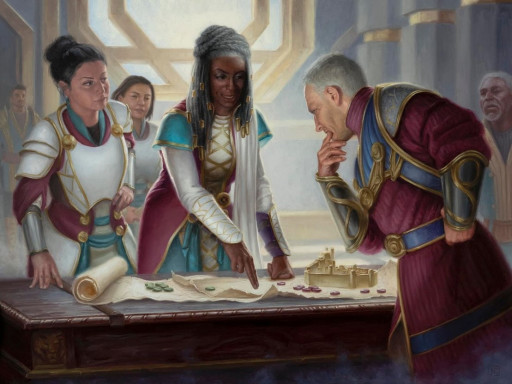
Wizards of the Coast: Kayla’s Reconstruction by Nichola Elias
When you are the DM, you have final say over the details of your game. Rules, abilities, and the flow of the story are under your control. But your players have an important role in the game as well! A good DM listens to the input of their players, asking for feedback and suggestions on how to improve their game.
Of course, just like with advice from other DMs, you should take your players’ input with a grain of salt. But when they submit genuine suggestions or critiques of the game, it is important to listen and potentially adjust. It is also important to listen to players when they share about themselves and what they are comfortable with encountering in the game. This will make your players feel heard and valued as the campaign continues.
You may want to ask your players to provide feedback on your game every few sessions, sharing what they enjoy and what could be improved. Don’t take these critiques personally; instead, use them as a stepping stone to building the best game possible! You may also want to start out your campaign by asking what your players want to do in their game and what they are comfortable with. As a DM, you should be considerate of their feelings when they play the game. This way, you can make the game as fun as possible and avoid topics that would make them uncomfortable.
The real magic within a tabletop roleplaying game is creating a story with your friends. Listening to your players shows them that you value their input and care about their thoughts. Their feelings and preferences matter to you. After all, you are guiding them through this world.
3. Don’t Be Afraid to Improv
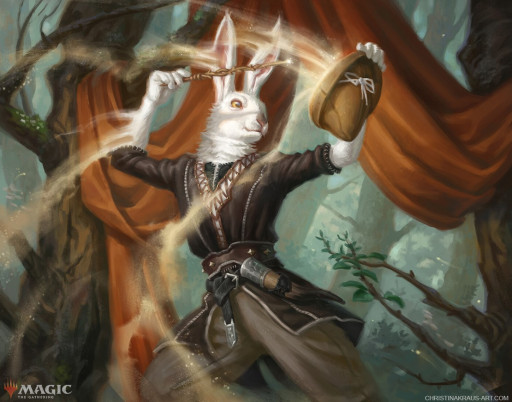
Wizards of the Coast: Preston, the Vanisher by Christina Kraus
Improvisation can be one of the most exciting and most intimidating parts of D&D. You can do and be anything you want, but you can also do and be anything you want. Not everyone is comfortable with improvisation, and new DMs are often less experienced. But that’s okay! The more you practice, the better you will become.
Improv is making up something on the spot, like having a conversation with an NPC or making up information about a location or plot point. As a DM, you will be doing a lot of improv–players will go off in a direction you didn’t expect or talk to someone you didn’t have prepared. This can be intimidating when you encounter it for the first time, but we’ve all been there! The more you improvise, the easier and more fun it becomes. There are some tricks to getting over the first hurdle, though, and making it easy and fun right off the bat.
Just like with my advice for not leading too rigid of a story, improv can be made easier if you prepare in chunks. You may not know where your players will go after they encounter the big bad, but you can put yourself in their shoes and prepare a couple of possibilities, like the castle, the forest, or back to home base. There are premade tables to help you when you’re stuck, like encounter and travel lists. Finally, just talk to your players–let them know if you’re uncomfortable with improv and let them help you during the campaign, either by helping to redirect or providing solutions to problems you hadn’t prepared for.
There’s no getting around the need for improvisation in a game like D&D. With character choice, the game’s very nature is unpredictable. But you can prepare yourself for improv and keep practicing. As someone who was terrified of improv when I first started playing, I can now say that it is one of my favorite things about the game.
2. Prep As Much As *You* Need
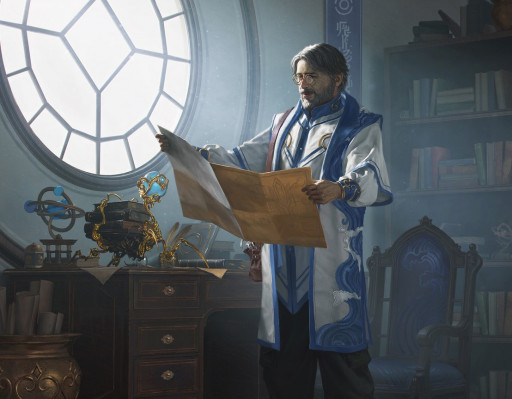
Wizards of the Coast: Drafna, Founder of Lat-Nam by Lie Setiawan
Improv and preparation walk hand in hand. You need to have certain things prepared beforehand, like the main moments of the story and what locations are open to your players to explore. Other things can be left until the moment they come into play, like surprise encounters or following your players’ lead. As the DM, prepare as much as you, personally, need to feel comfortable running your game.
Some DMs like to have everything prepared, laying out the major beats of the story, encounters, and all the options for their players to explore. Others prefer to come up with what is needed on the spot, allowing the story to dictate where they go and what happens next. You may be one or the other, or somewhere in between! Regardless, you should prepare as much as you feel comfortable with. This will make your game flow more easily and allow everyone, including yourself, to have fun.
Everyone has a different style of DMing. Apart from preparation, some DMs love to have an open world while others have a straightforward story, or they enjoy gritty realism vs fantasy adventures. It can be useful and fun to branch out into other methods, but you want to find what is best for you. If you find preparing multiple scenarios out ahead of time makes you feel more at ease, go ahead and do so! You need to be comfortable and have fun just as much as your players do.
When you, the DM, are comfortable and confident about your campaign and story, you give your players permission to be comfortable and confident themselves. Many of the tips earlier in this list apply to this point, like using enemies and terrain, including character backstories, and preparing a name list or extra side quests. Each tip allows you to be more comfortable in your own game and set yourself up for success. When the little things are taken care of, you have more focus to engage with the game itself and have more fun.
1. Be Yourself
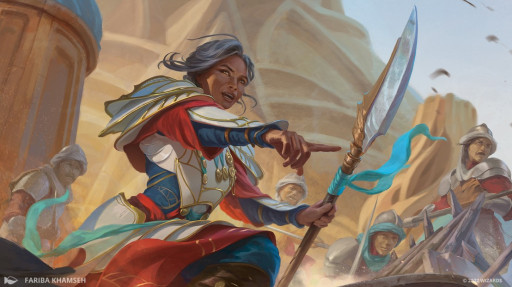
Wizards of the Coast: Yotian Tactician by Fariba Khamseh
Finally, be yourself! You are the DM. Each DM brings their own flavor and gifts to their game. Whether you are brand new or have been playing for years on end, each campaign will be different. What makes your game special is that you are the one leading it.
I can’t DM like Matthew Mercer, Brennan Lee Mulligan, or Griffin McElroy. I can’t DM like my best friends from college. They have styles unique to them. But I can DM like myself. I am able to create and lead a game no one else can, because no one else is me. Who knows, maybe your game will be the style that someone else looks up to for inspiration.
One of the things I like to do in my games is write my story based around my characters. They become the chosen ones, holding the fate of the world in their hands. While this limits my ability to write about a random group of ordinary people, it is my DM style. I like to show how much I care about my players by writing the story all about them. It may not work for everyone, but it is one of the ways I put myself into my game and make it my own.
The more you play like yourself and put yourself into your game, the better your game will become. This may sound cheesy, but your game will be better when you care about it and allow yourself to enjoy the game. While yes, it can be helpful to take inspiration from other DMs and build off of their successes, your game is your own. Only you hold the key to your story–what will it unlock?




